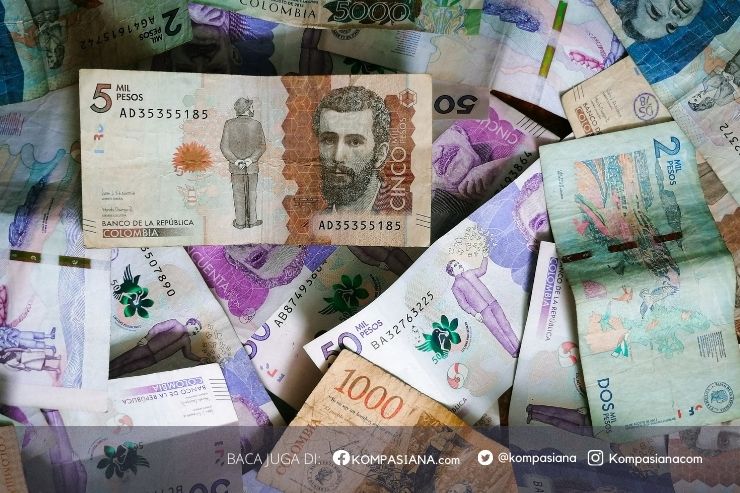Talking about economics is never enough, especially when discussing the economics system. Economic systems is a systematic inquiry into the nature of historical economic system, their relationships with their peripheral areas, the ways in which they and their components have evolved over time, including modes of production, use of resources coordination, functions of the state in the economy, and the institutions of money and property (Gottlieb 1984).
The main economic systems that generally known today's are capitalism economics and socialism economics. Both economic systems are also called conventional economics. Conventional economics aims to build a social life structure but just focuses on material aspects.
Beside the two mainstreams of conventional economics, there is an economic system that aims to build society life and able to accommodate human needs in the world and the hereafter (Falah), named Islamic economics. Both conventional and Islamic economics have a different paradigm and almost difficult to reach an agreement, so it bears several differences that should we know.
Before discussing the differences between the conventional economics and Islamic economics, first, we need to know what conventional economics and Islamic economics are. The conventional economics here is a capitalist economy with Adam Smith (1723-1790) as the main character and the socialist economy where Karl Marx (1818-1883) as the main character.
Conventional economics is an economic system that gives full freedom to everyone to carry out economic activities (Lidyana 2016), it does not have an absolute standard and can change according to a condition in a society. Meanwhile, the Islamic economic system is an economic system that is extracted from the values contained in the Qur'an and Sunnah, that focuses on brotherhood and strength (Machmud 2017).
From the definitions, we know that conventional economic system have no guidance in carrying out economic activities so it has its own rules that can be used as a guide, while Islamic economic system has Al-Qur'an and As-Sunnah (the authentic traditions of Muhammad, the Prophet of Islam) as a guide.
In addition to the differences contained in their respective guidelines, conventional economics and Islamic economics have some other differences. The main difference is on the economic fundamental issues.
According to the conventional economic system, the real economic problem is the lack of existing resources. Lack of the resources is often called 'scarcity.' This is because every human being has diverse and unlimited needs while the resources (goods and services) used to fulfill human needs are limited (Sukirno 2002).
On the other hand, Islamic economics mention the limited is in human needs, while its resources are not limited or already measured in accordance with what has been given by Allah SWT. Scarcity in Islamic economics is actually only a relative scarcity, it is a scarcity of resources occurring in short stalls or in certain areas only.
Relative scarcity occurs due to insufficient distribution of resources, human limitations, and conflicts between objectives (P3EI 2015). Thus, conventional economics has unlimited human wants and the desire for opulence, while Islamic economics preaches the need for humans to suppressing their wants, avoiding luxury life, and sharing (a moral activity that brings its own rewards and happiness).
Other difference between conventional and Islamic economics lies in the methodology issues. Conventional economics emphasize positive methodology, which means all the economics problem or activities are based on reality.
In conventional economics, a positive approach is much stressed because it studies the phenomenon of the existing economic and postpones the measurement value in any economic decisions (Maulidizen 2017). Meanwhile, Islamic economics uses two kinds of methodology, normative and positive methodologies. Normative methodology refers to what should be done in economic activities according to Islamic rules. Both economics systems use a positive methodology, but Islamic economics also use the positive method that aims to find a way to change economics practice in the Islamic way.
Further, there is one difference that most distinguishes conventional and Islamic economics, it is the imposition of interest in a bank. In conventional bank, interest charged in almost all banking transactions, while in Islamic economics interest is prohibited. Interest in Islamic economics is called Al-riba. Al-riba technically refers to the "premium" that must be paid by the borrower to the lender along with the principal amount as a condition of the loan or for an extension in the duration of loan (Askari, Zamir, Abbas 2015). The imposition interest at the conventional bank is reasonable, because their orientation is maximum profit, in contrast to Islamic (sharia) bank the law of imposition interest is haram (anything that is prohibited by the faith).
From the explanations above, we can take the conclusions that between conventional and Islamic economics used several differences which can affect every economic activity. Any economic system used is dependent according to the view of the life of the state. This essay does not intend any negative aspect, it is only intended to explain in brief the current economic systems used in the world. At least, this essay can be a repertoire of knowledge that opens the insight of our knowledge about conventional and Islamic economics.
References:
Askari, Hossein., Zamir Iqbal, dan Abbas Mirakhor. 2015. Introduction to Islamic Economics: Theory and Application. Singapore: John Wiley& Sons.
Gottlieb, Manuel. 1984. A Theory of Economic Systems 1st Edition. USA: Academic Press.
Lidyana, Novita. 2016. "Perbandingan Ekonomi Konvensional dan Ekonomi Islam." Iqtisodiyah: Jurnal Ekonomi dan Bisnis Islam 1 (1): 67-80.
Machmud, Amir. 2017. Ekonomi Islam untuk Dunia yang lebih Baik. Jakarta: Salemba Empat.
Maulidizen, Ahmad. 2017. "Methodology of Islamic economics: an analysis comparison." Islamiconomic: Jurnal Ekonomi Islam 8 (1): 1-18.
Pusat Pengkajian dan Pengembangan Ekonomi Islam (P3EI) Universitas Islam Indonesia. 2015. Yogyakarta: Rajawali Press.
Sukirno, S. 2002. Pengantar Teori MikroEkonomi. Jakarta: Lembaga Penerbit Fakultas Ekonomi Universitas Indonesia.









